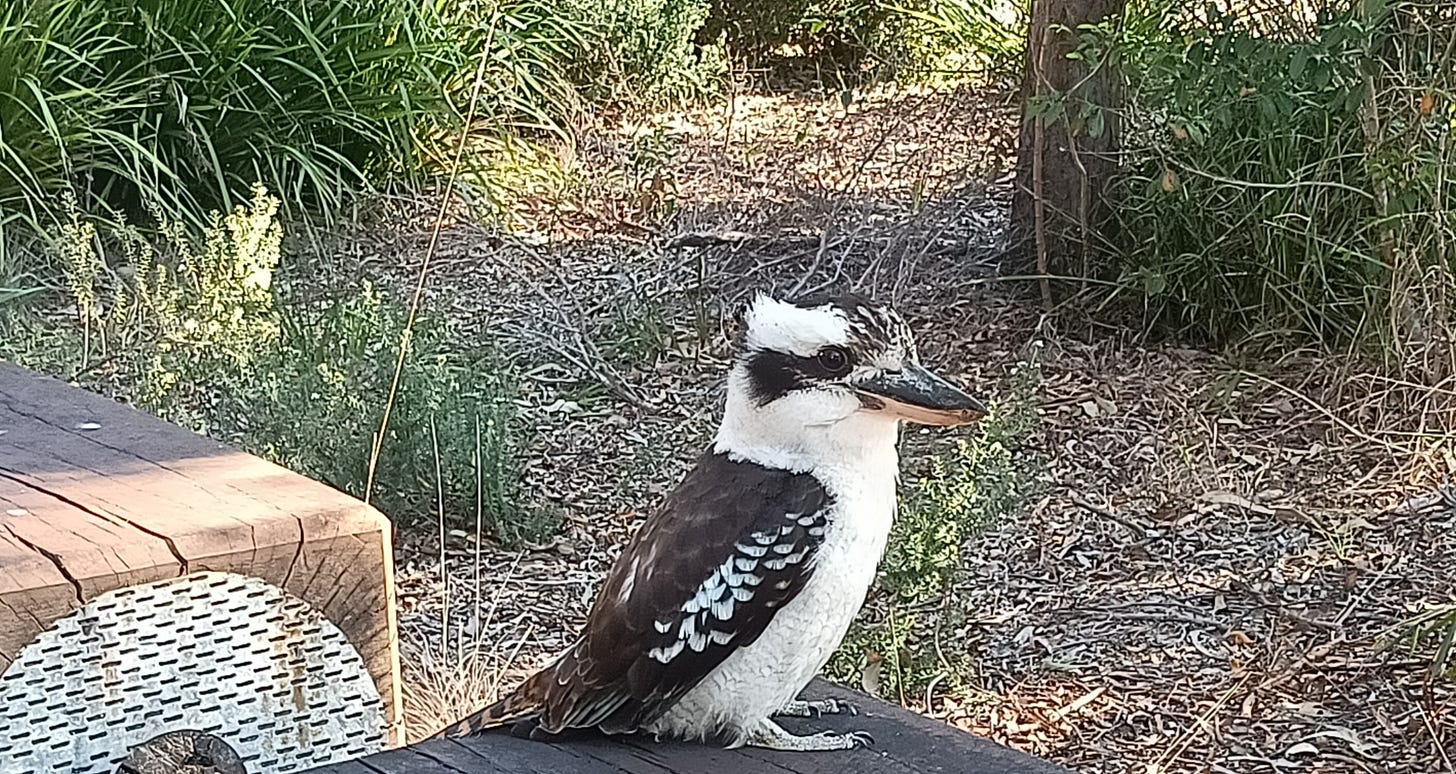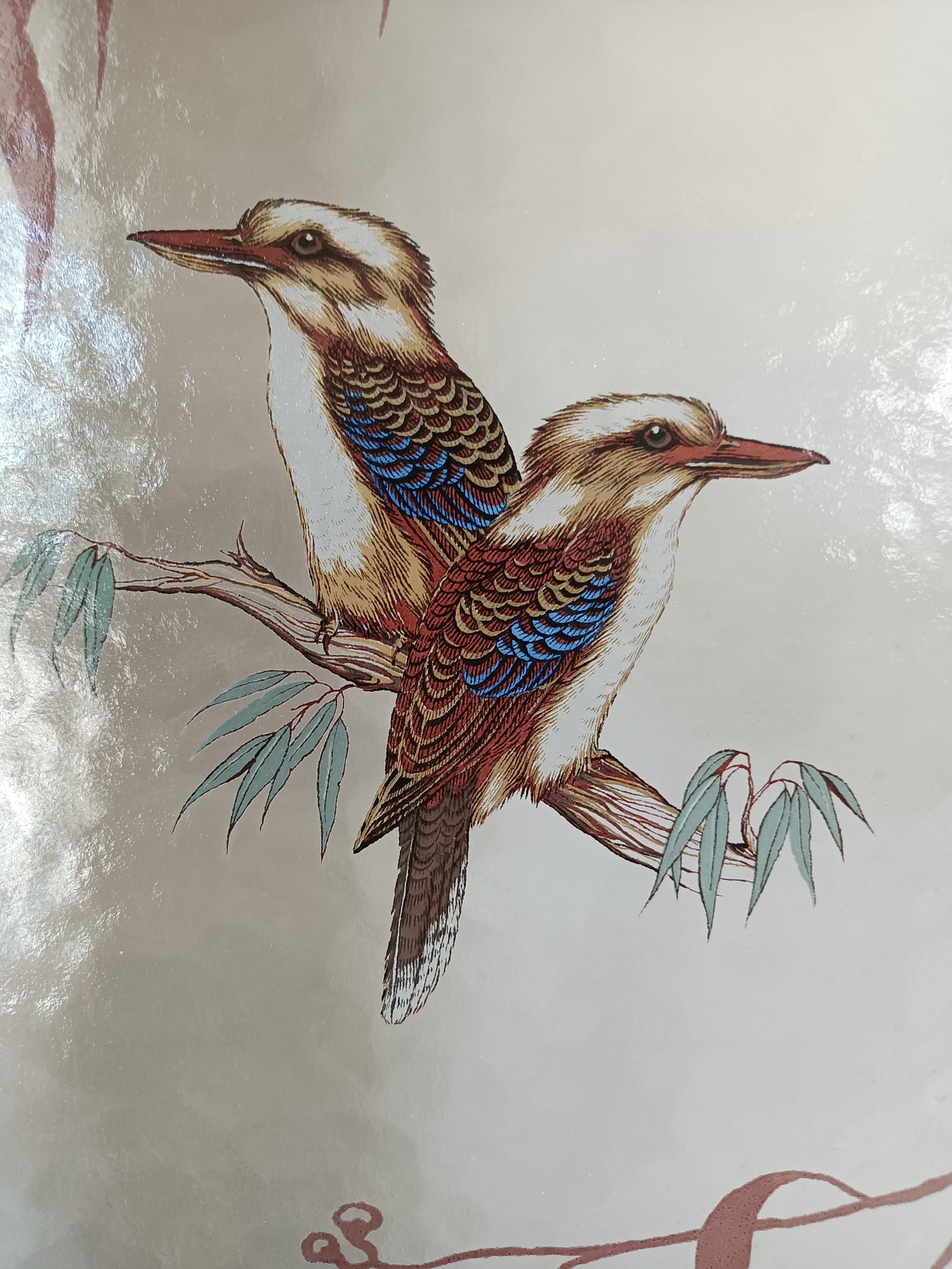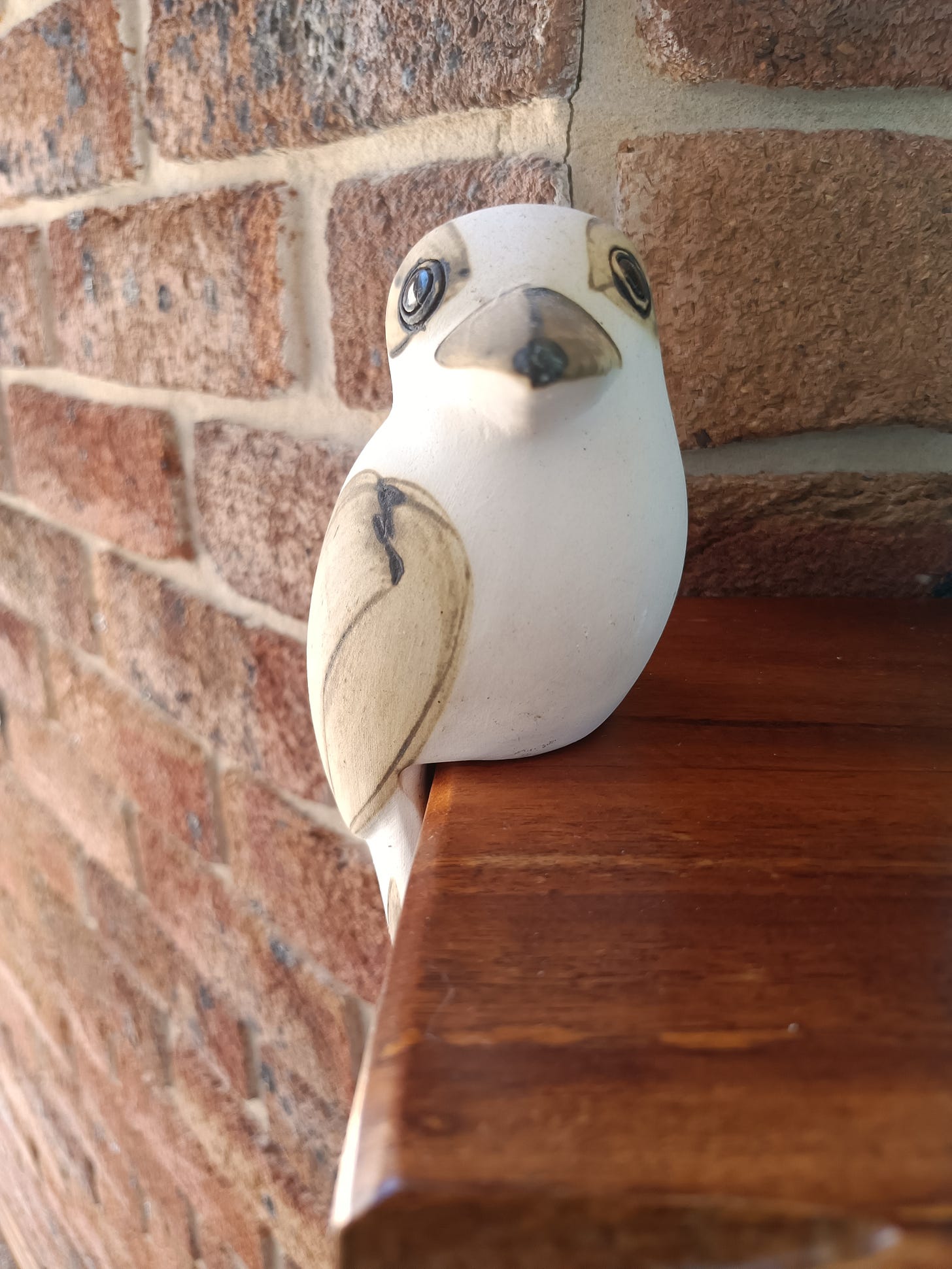
Long ago in the Dreamtime, when the animals were first on the earth which were very much bigger than they are today, there was a time when there was no sun, only a moon and stars.
One day, Dinewan the emu and Brolga the beautiful dancing bird, were out on a large plain arguing and fighting. Brolga got so angry that she ran over to Dinewan's nest and grabbed one of her large eggs, which she threw up into the sky with all her might. It landed on a heap of firewood breaking, spilling the yellow yolk, which burst into flames. This lit up the whole world below to the astonishment of all the creatures as they had only been used to the semi-darkness and were dazzled by such brightness.
A good spirit who lived in the sky saw how beautiful the earth looked when it was lit up by this blaze. He thought it would be a good thing to make a fire every day; which he has done ever since. All night the good spirit and his helpers collect wood and stack it up. When the stack is nearly big enough, the good spirit sends out the morning star to let them know on earth that the fire will soon be lit.
However, the spirits found that sending out the morning star was not enough because those who slept did not see it. The spirits decided they must have a noise made at the dawn of each new day to announce the arrival of the sun, which would wake the sleepers - but what noise?
Then one day the spirits heard the laughter of Goo-goor-gaga, the kookaburra, ringing through the air. This was the noise the spirits were looking for. They asked Goo-goor-gaga that as the morning star faded and the day dawned, every morning would he laugh his loudest to awaken all the sleepers before sunrise. Goo-goor-gaga agreed and has done so ever since - making the air ring with his early morning laughter.
goo-goor-gaga - goo-goor-gaga - goo-goor-gaga
- From Dreamtime Kullilla-Art website (https://www.kullillaart.com.au/dreamtime-stories/Goo-Goor-Gaga-the-Kookaburra)
I like to think of kookaburras as artists — in the traditional understanding of art: the Latin concept of fitting things together. The purpose of their art is to awaken people to the beauty, goodness and truth of the world — specifically, the beauty of the morning, the goodness implicit in a day filled with potential and the truth that the sun is rising.
Their art itself? Laughter.
Their laughter fits people together with the dawn. It fits them into their place as celebrants — integrated participants — of the beginning of the day. What expresses and heralds the joy of dawn? One answer might be self-forgetting, celebratory laughter.
A symbol, therefore, of beginnings and celebration, the kookaburra uses its art to call people to begin each day with a celebration. A carpenter might call people to the same kind of attention with the orientation of a building and the positioning of its windows, a gardener with the caretaking of their roses and the planning of their paths. I’m sure the uses to which poets and painters could put their art in pursuing this purpose will come quickly enough to mind.
There is no art without a yearning to attend again to a kind of worship or celebration that has been forgotten. Artistry is celebrating, forgetting, fitting together, attending and celebrating again. That’s a bit chiastic; maybe it’s even true.
‘I do think that to participate in a body — to stand next to people and to celebrate the same thing — and to participate in the same mystery is, in a certain manner, ultimately the kind of thing that holds the world together; because it is attentive to the highest.’
- Jonathan Pageau (from his May 2022 Q&A)





